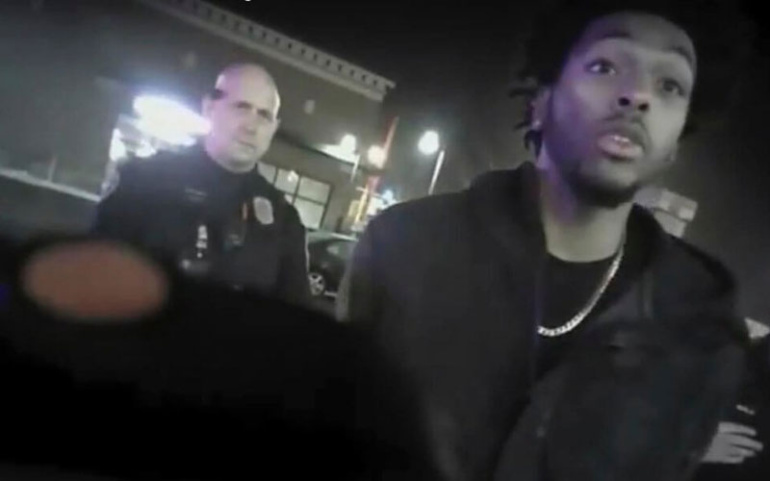What should have been a 10-minute officer-initiated Q&A ending with a parking ticket or stern warning quickly escalated to a violent assault and arrest.
On Wednesday, the Milwaukee Police Department released bodycam footage of a violent encounter between several of its officers and NBA Milwaukee Bucks player Sterling Brown earlier this year in January.
A lone patrol officer was waiting for Brown to return to his car, which appeared to have been parked across several marked parking spaces in what appeared to be a mostly vacant, desolate Walgreens parking lot on a dark and rainy night.
As Brown neared his car, the officer confronted Brown using a harsh, aggressive and disrespectful tone. Research has shown that police often speak very differently to black motorists than they do to white motorists upon contact. That night was no different. The officer’s tone and the way he questioned Brown was snarky, aggressive and seemed to beg for a similar response from Brown.
The officer could be heard asking Brown questions that in my police supervisor mind were intended to escalate the situation; first verbally and ultimately physically. As I watched the bodycam, I knew almost immediately that this was going to end badly.
As a 20-year veteran sergeant of the Los Angeles Police Department, I have often managed and resolved similar conflicts during an officer-initiated traffic stop. As the professional on scene, the officer’s job was to advise Brown of the reason for the encounter, issue Brown a traffic ticket (at his discretion), and let Brown go on about his business.
But the isolation, location, and early morning hours seemed almost too irresistible for this officer.
So, instead, this first officer requested additional units and continued to badger Brown as he awaited his back-up. At one point the officer can be heard when asked by Brown, “what are we doing? The officer’s response was, “we are waiting.”
This officer requested additional units—not because Brown presented a threat, not because Brown was being uncooperative, but because once the cavalry arrived they were going to “put in work”. Police talk for “Brown was about to get his a – – handed to him.”
The bodycam showed Brown was compliant. When asked, he presented his ID. But the back-up hadn’t arrived yet, so the officer needed to stall. And to fill the time the officer continued to berate Brown.
What happened next was textbook Contempt of Cop©—responding units begin to arrive and there were at least six or more police officers now surrounding Brown in this desolate, dark, wet, parking lot. After several more minutes, arriving officers each appeared to take turns peppering Brown with questions—no doubt designed to be upsetting. The officer who started this mess is seen talking and visiting with other responding units as some of them remained seated in their patrol cars.


Add Comment